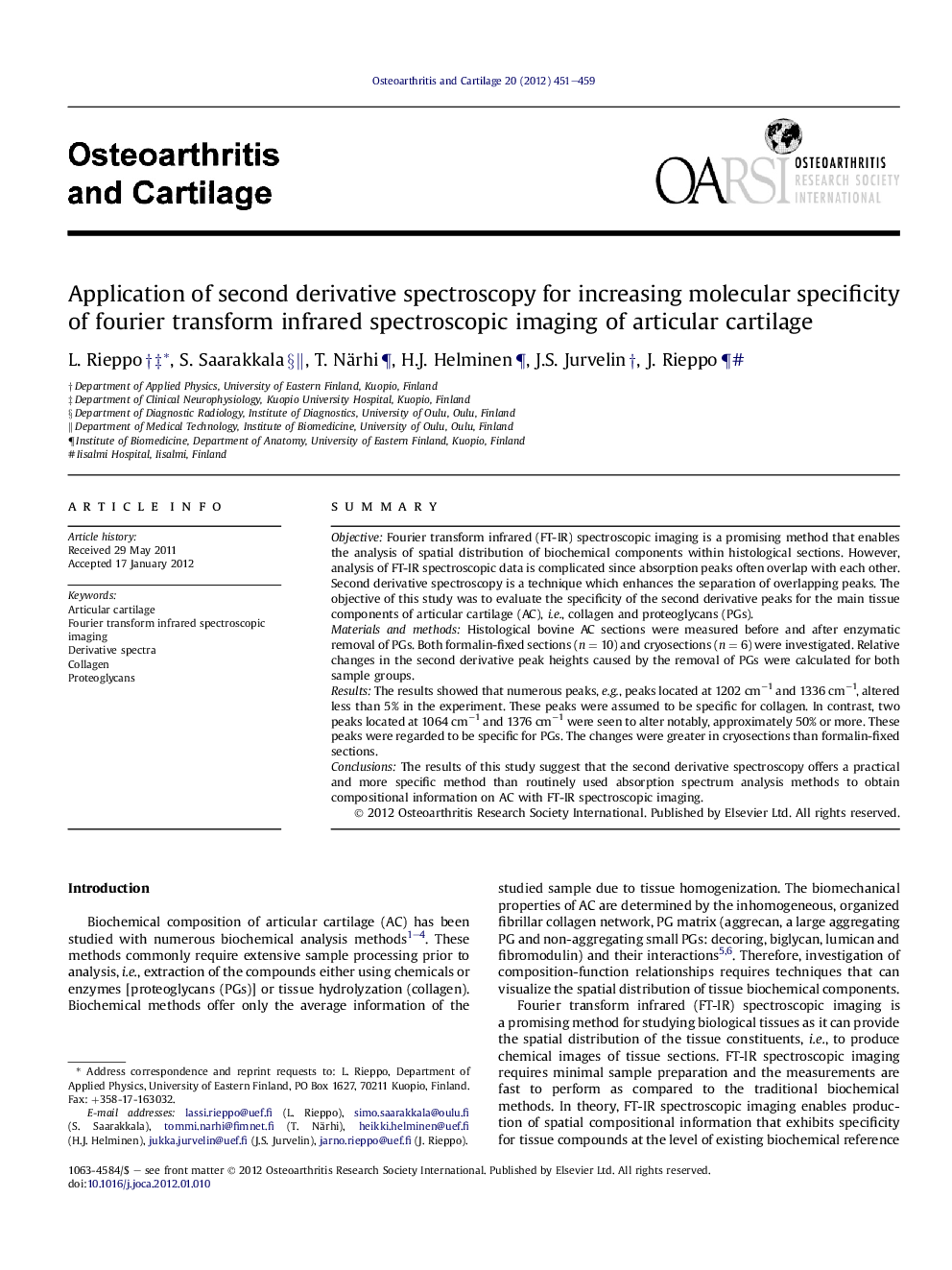| Article ID | Journal | Published Year | Pages | File Type |
|---|---|---|---|---|
| 3380002 | Osteoarthritis and Cartilage | 2012 | 9 Pages |
SummaryObjectiveFourier transform infrared (FT-IR) spectroscopic imaging is a promising method that enables the analysis of spatial distribution of biochemical components within histological sections. However, analysis of FT-IR spectroscopic data is complicated since absorption peaks often overlap with each other. Second derivative spectroscopy is a technique which enhances the separation of overlapping peaks. The objective of this study was to evaluate the specificity of the second derivative peaks for the main tissue components of articular cartilage (AC), i.e., collagen and proteoglycans (PGs).Materials and methodsHistological bovine AC sections were measured before and after enzymatic removal of PGs. Both formalin-fixed sections (n = 10) and cryosections (n = 6) were investigated. Relative changes in the second derivative peak heights caused by the removal of PGs were calculated for both sample groups.ResultsThe results showed that numerous peaks, e.g., peaks located at 1202 cm−1 and 1336 cm−1, altered less than 5% in the experiment. These peaks were assumed to be specific for collagen. In contrast, two peaks located at 1064 cm−1 and 1376 cm−1 were seen to alter notably, approximately 50% or more. These peaks were regarded to be specific for PGs. The changes were greater in cryosections than formalin-fixed sections.ConclusionsThe results of this study suggest that the second derivative spectroscopy offers a practical and more specific method than routinely used absorption spectrum analysis methods to obtain compositional information on AC with FT-IR spectroscopic imaging.
